Thanks for the compliments! I'm really digging the sound from these. I'm waiting on some stands to place them right now, but even so, they sound superb. Very low reaching for such small bookshelf speakers.
I had some time to disassemble the crossovers to take some pictures on how they are built. Luckily I built them to be taken apart because the boxes are not exact and I had accidently installed the incorrect network into the boxes (which didn't quite fit).
Here's the base of the crossover. You can see the five holes drilled around the edges as well as four holes with inserts for the crossover networks to fasten into. Three of the sides have an offset to fit the top of the box.
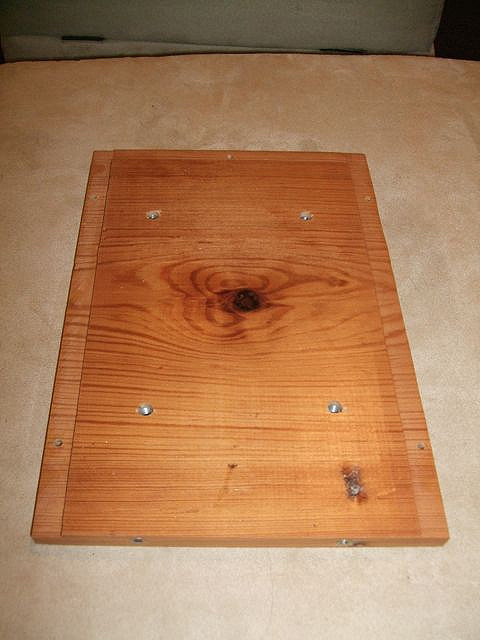
Next, the crossover network attaches to the base as shown. The back is made of lexan sheet from home depot, with the terminals taken from the GR Research included cups as well as some additional cups I bought from parts express.
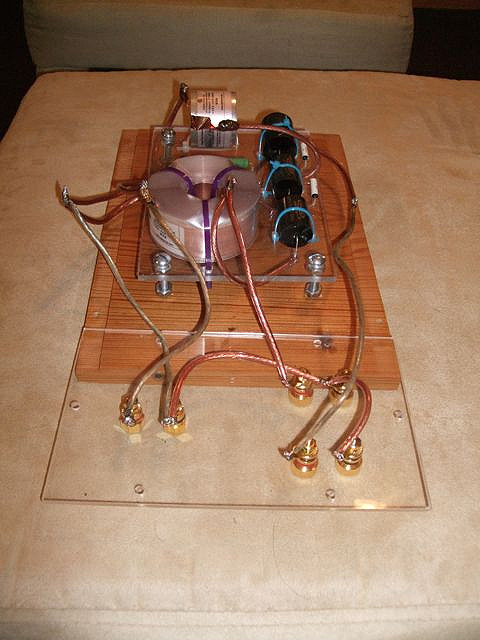
The network stands off the base using some 2" 1/4" machine screws with nuts to keep it from falling. The back uses smaller #6 fasteners that attach to these really small wood inserts that are drilled into the side of the base and top.
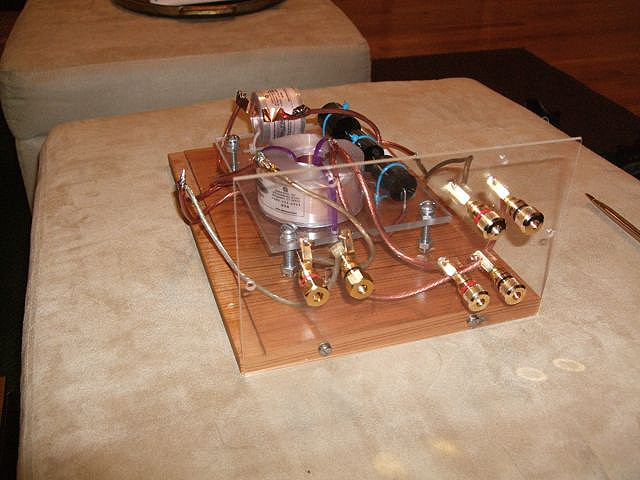
The inserts for the network also double as the feet inserts on the base. It seems kind of silly to have spikes on the crossovers but it keeps the base off the ground, which has some button head fasteners that protrude (from the five holes seen in the first pic).

Here's a shot of the top of the crossover. You can see all the inserts that are drilled around the bottom to close out the crossover.
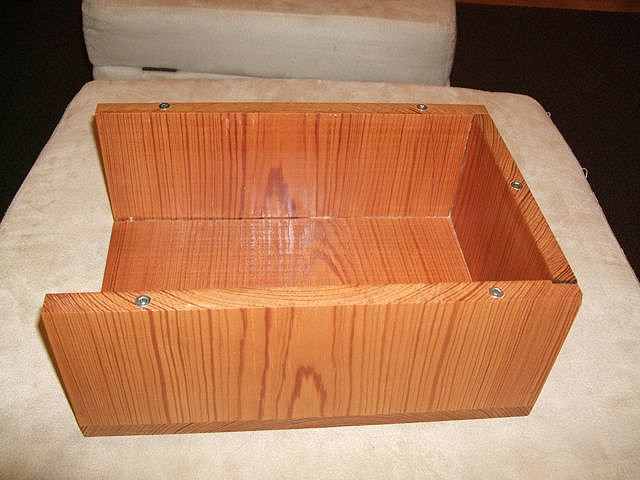
The crossovers are coming together. Here's a shot from the back now that the top is screwed into place.
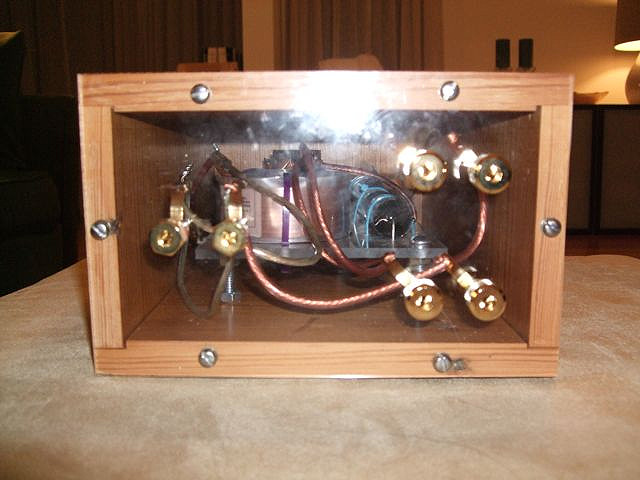
And I almost forgot to give credit where credit is due...I added the GR Research logos to the back as well. Here's both crossovers together from the back (and the dog is happy to be helping in the assembly as well).
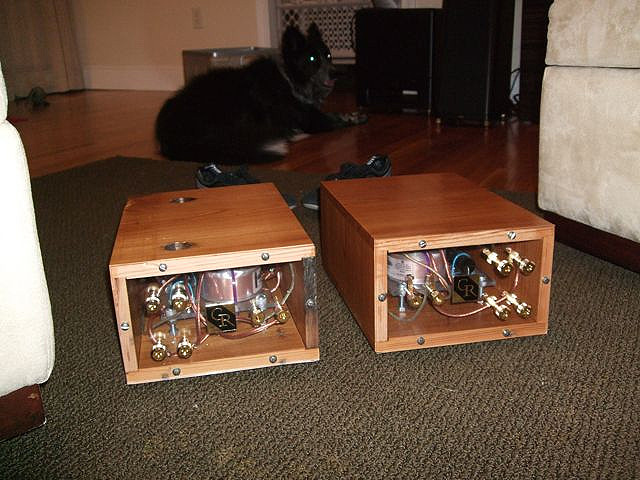
Finally, here's the pic from the front.

Hope you all found this interesting!